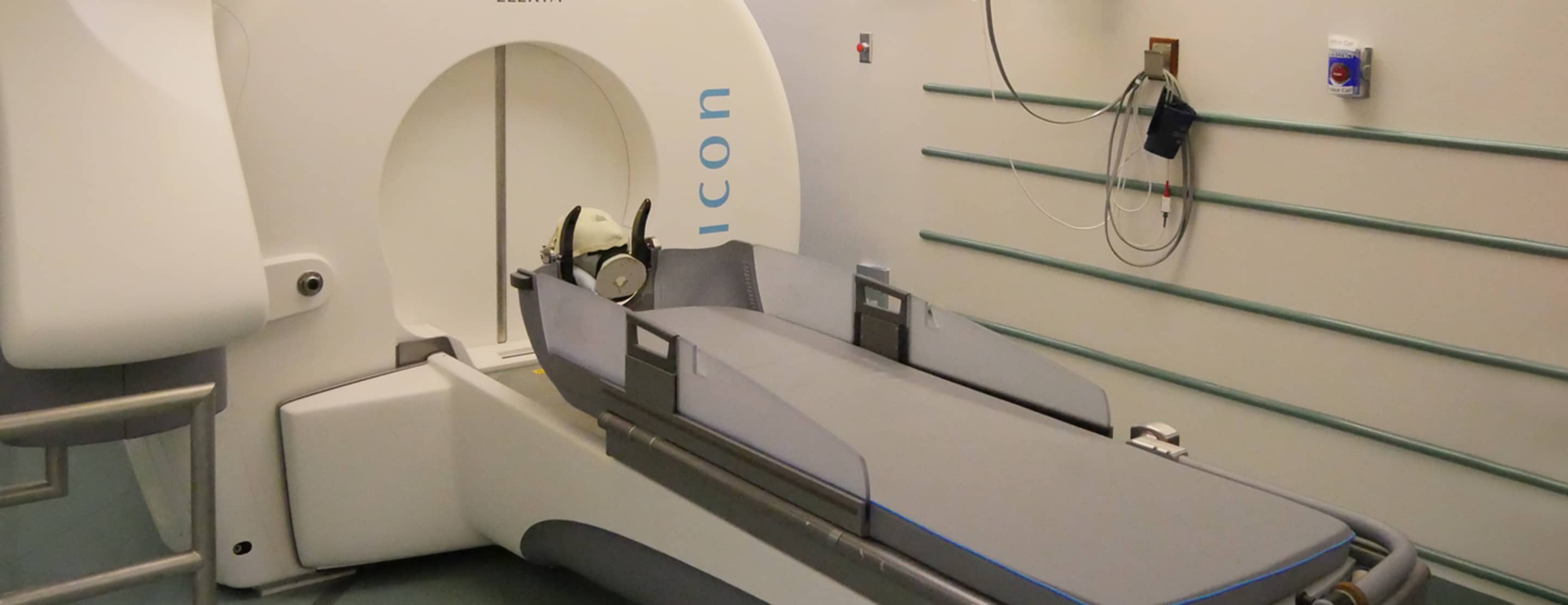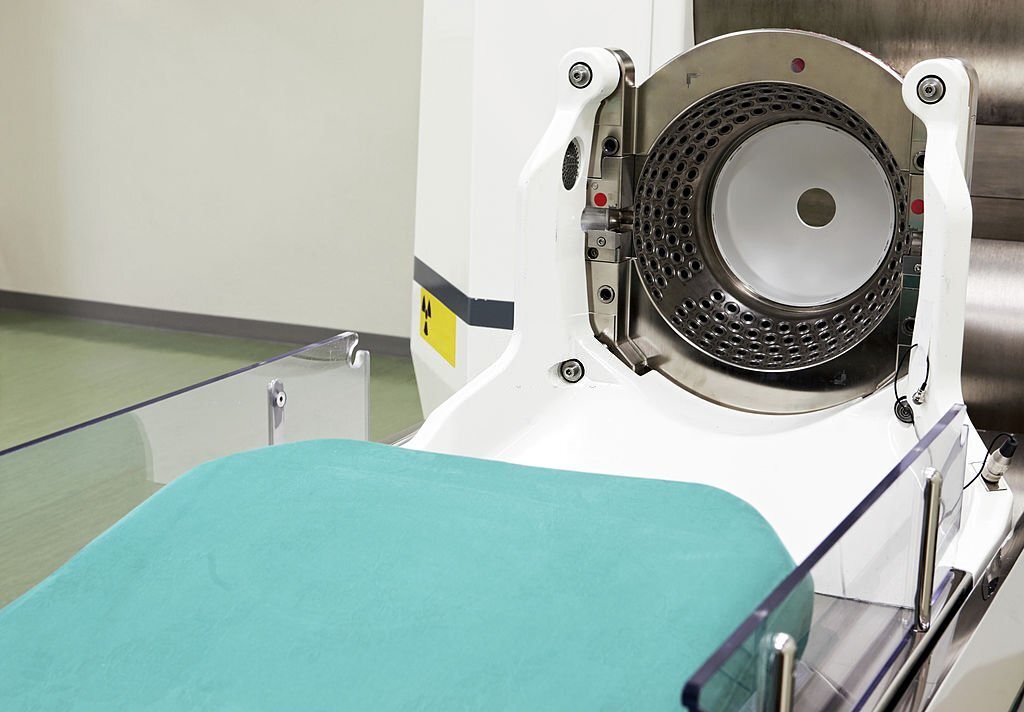
Best Hospital For Gamma Knife Radiosurgery In India
The Gamma Knife isn't really a knife at all, but Radiosurgery - a non-invasive neurosurgical procedure that uses powerful doses of radiation to target and treat diseased brain tissue while leaving surrounding tissue intact. Gamma Knife treatment offers new hope for patients with brain tumors, vascular malformations and functional disorders.
Radiosurgery uses high doses of radiation to kill cancer cells and shrink tumors, delivered precisely to avoid damaging healthy brain tissue. Gamma Knife radiosurgery is able to accurately focus many beams of high-intensity gamma radiation to converge on one or more tumors. Each individual beam is of relatively low intensity, so the radiation has little effect on intervening brain tissue and is concentrated only at the tumor itself.
Gamma knife is now the most accepted and widely used radio surgery treatment in the world for brain tumours. About half a million people have been treated with Gamma knife surgery, and it's the only Radiation Therapy System cleared by the FDA for irradiating brain metastases. Gamma knife surgery, despite the name, there is no blade or knife - it's called Gamma knife because radio surgery (one-session treatment) has such a dramatic and precise effect in the target zone that the changes are considered 'surgical.' So there's no incision or blood, and minimal risk of complications. The device aims gamma radiation through a target point in the patient's brain. The patient wears a specialized helmet that is surgically fixed to the skull, so that the brain tumor remains stationary at the target point of the gamma rays. An ablative dose of radiation is thereby sent through the tumor in one treatment session, while surrounding brain tissues are relatively spared.
Gamma Knife radiosurgery has proven effective for patients with benign or malignant brain tumors up to 4 centimeters in size, vascular malformations such as an arteriovenous malformation (AVM), pain or other functional problems.
The risks of gamma knife radiosurgery treatment are very low, and complications are related to the condition being treated. Gamma-Ray Stereotactic Treatment System. The Gamma Knife instrument put many gamma-ray beams from different angles and directions irradiate to body, making them all together to form the focus point. Since each dose of radiation beam is very small, it basically does not cause damage to human tissues which it through. As long as the ray focuses on the lesion, it can be as precise as a scalpel to destroy the lesion, with no trauma, no hemorrhage, no infection, no pain, and also reach rapid, safe, reliable magical effect.
Indications
- Cerebral Tumors
- Thoracic and Abdominal Tumors in Advanced
- Body solid Organ Tumors
What can Gamma Knife Radiosurgery Treat?
Gamma Knife Radiosurgery is a type of radiation therapy that uses a highly focused beam of gamma rays to treat specific targets in the brain. It can be used to treat a variety of conditions, including:
- Brain tumors: Gamma Knife Radiosurgery can be used to treat both cancerous and non-cancerous brain tumors. It is often used for tumors that are difficult to reach with traditional surgery or for patients who cannot tolerate surgery.
- Arteriovenous malformations (AVMs): AVMs are abnormal tangles of blood vessels in the brain that can cause seizures, headaches, and other symptoms. Gamma Knife Radiosurgery can be used to shrink and ultimately eliminate the AVM.
- Trigeminal neuralgia: This is a chronic pain condition that affects the trigeminal nerve, which carries sensation from the face to the brain. Gamma Knife Radiosurgery can be used to target the nerve and relieve pain.
- Acoustic neuromas: These are benign tumors that grow on the nerve that controls hearing and balance. Gamma Knife Radiosurgery can be used to stop the growth of the tumor and, in some cases, shrink it.
- Pituitary tumors: Gamma Knife Radiosurgery can be used to treat pituitary tumors, which are located at the base of the brain and can cause hormonal imbalances.
Overall, Gamma Knife Radiosurgery is a highly effective and precise treatment option for a range of brain conditions. It is generally well-tolerated and has a low risk of complications. However, the specific treatment plan and outcome will depend on the individual case, and should be discussed with a healthcare professional.
What Is This Equipment Used For Gamma Knife Radiosurgery?

The Gamma Knife is a specialized piece of medical equipment used in Gamma Knife Radiosurgery. It is not an actual knife, but rather a device that uses radiation to precisely target and treat specific areas in the brain.
The Gamma Knife consists of a head frame, which is secured to the patient's head, and a helmet-like device that contains over 200 individual radiation sources. The radiation sources are directed towards the target area in the brain, delivering a highly concentrated dose of radiation while minimizing exposure to surrounding healthy tissue.
The Gamma Knife is equipped with advanced imaging technology, such as MRI and CT scanners, which are used to create detailed images of the brain and guide the radiation beams to the target area with sub-millimeter accuracy. This allows for a precise and effective treatment while minimizing damage to surrounding healthy tissue.
Gamma Knife Radiosurgery is typically performed on an outpatient basis, and the procedure itself usually takes between 15 minutes to a few hours, depending on the individual case. After the procedure, the patient can typically return home the same day and resume normal activities within a few days to weeks, depending on the specific condition being treated.
Risks of Gamma Knife Radiosurgery?
Like any medical procedure, Gamma Knife Radiosurgery comes with some potential risks and side effects. However, it is considered a safe and effective treatment for many brain conditions, and serious complications are rare. Some possible risks of Gamma Knife Radiosurgery include:
⇨ Swelling and inflammation: Gamma Knife Radiosurgery can cause swelling and inflammation in the brain, which can lead to symptoms such as headaches, nausea, and vomiting. These symptoms usually go away on their own within a few days to weeks.
⇨ Radiation side effects: The high-dose radiation used in Gamma Knife Radiosurgery can cause side effects such as fatigue, hair loss, and skin irritation. These side effects are generally mild and temporary.
⇨ Neurological changes: In rare cases, Gamma Knife Radiosurgery can cause neurological changes such as numbness, weakness, or seizures. These changes may be temporary or permanent, depending on the individual case.
⇨ Radiation necrosis: This is a rare but serious complication that can occur when the high-dose radiation damages healthy brain tissue. It can cause symptoms such as headaches, seizures, and cognitive changes, and may require additional treatment.
⇨ Failure to treat the underlying condition: In some cases, Gamma Knife Radiosurgery may not effectively treat the underlying brain condition, which may require additional treatment or surgery.
It's important to note that the risks and side effects of Gamma Knife Radiosurgery vary depending on the individual case, including the specific condition being treated, the size and location of the target area, and the overall health of the patient. Your doctor can discuss the potential risks and benefits of Gamma Knife Radiosurgery in your specific case as well as Gamma Knife Radiosurgery Cost In India.